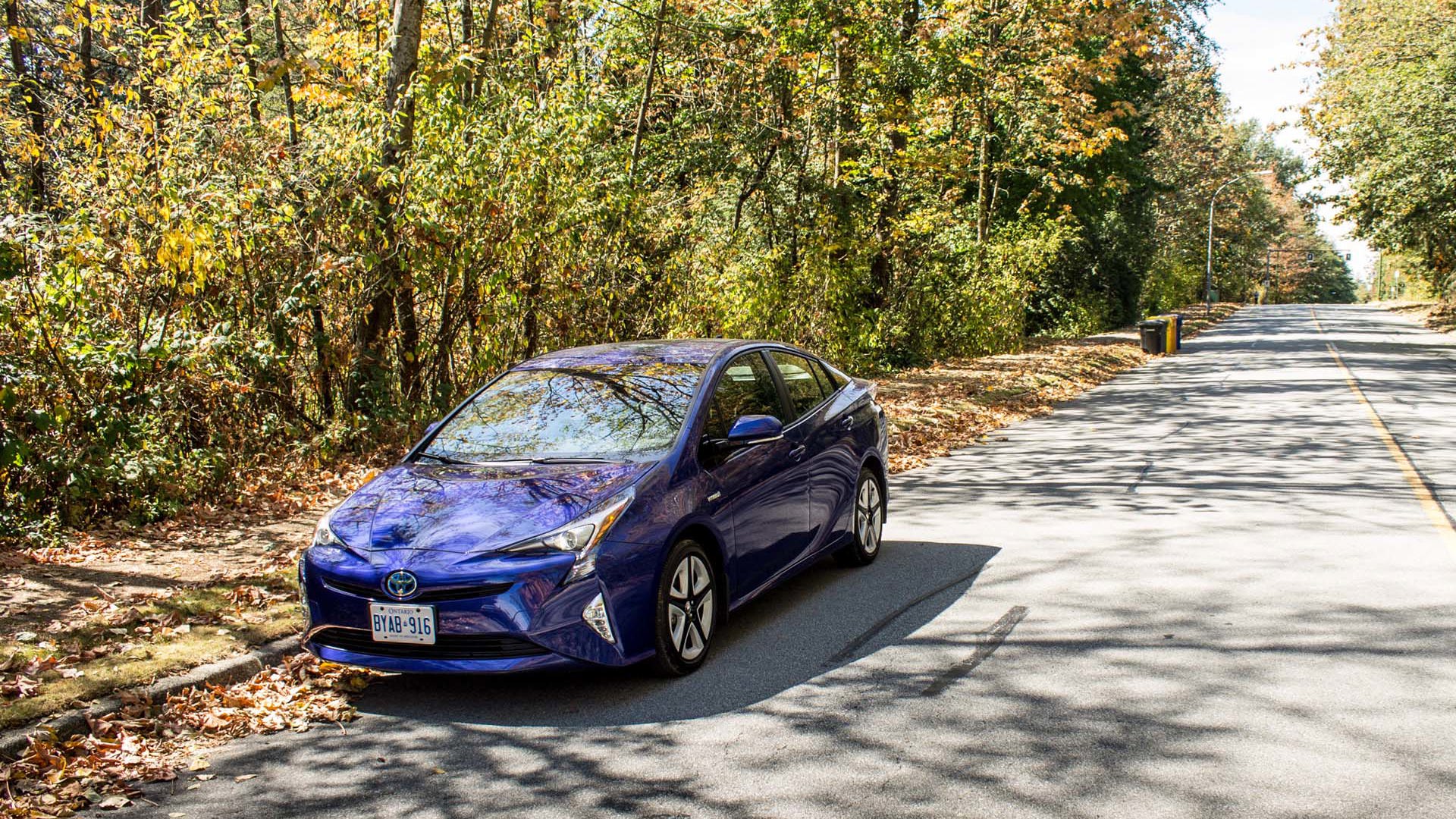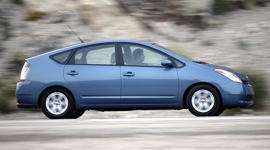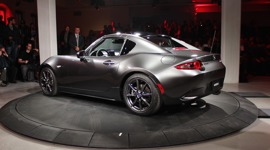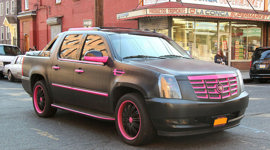This isn't the silliest thing I've ever done – but it's close. On one hand, we have Toyota's ubiquitous hybrid eco-pod, now reclothed to look like some sort of Pokémon. On the other hand is the most traditional car to ever come out of Japan, a V12-powered limousine fit for the Imperial family. The only thing they seem to have in common is that they're both Toyotas, but there's a good reason I've lined them here today. Well, a reason, anyway.
Toyota has an undeserved reputation as a manufacturer of driving appliances. The Camry and the Corolla get mocked by the enthusiast crowd for being capable but dull, and rarely pushing the envelope.
However, when you're the de facto largest automaker in the world, you get to pull off some pretty daring feats from time to time. These two machines represent some of the most successful, yet unusual powertrains ever attempted. One has the only V12 ever mass-produced by any Japanese company, and the other is the most successful full-hybrid car ever made.
Let's start with the Century. This ocean liner of a Toyota isn't just fit for an Emperor, it's the car actually used by the Japanese emperor. Should you see one cruising along Tokyo's streets, know that there's someone very important inside. Business executives might have a BMW 7 Series or Mercedes S-Class, but those at the very top always use a Century; it carries the kind of prestige you can't get by adding chrome and horsepower.
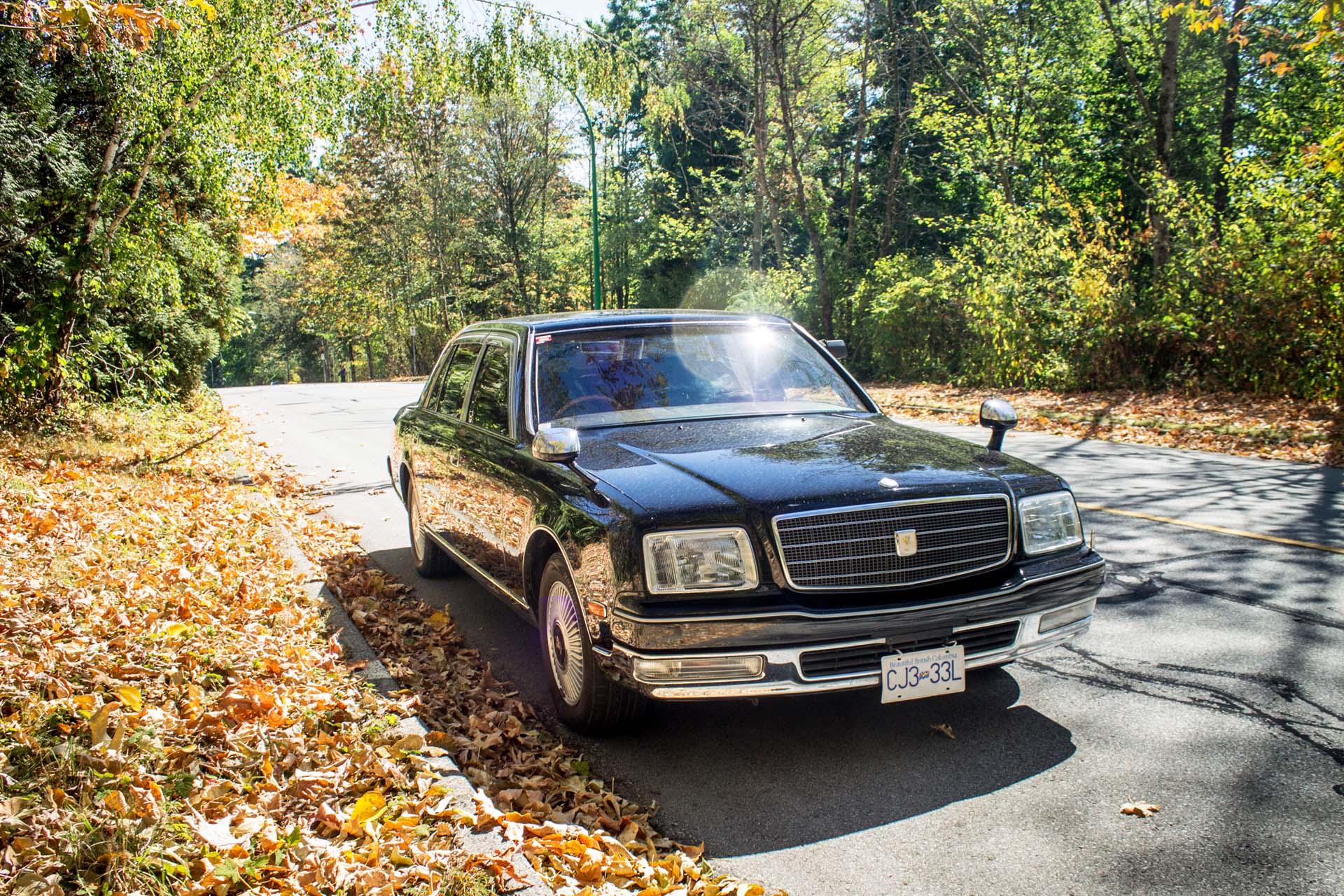
Short of the Morgan 3-wheeler, the Century might be the most unchanging car in the world. Only two versions have existed since 1967, and this 2000 model is essentially identical to the car you can buy today. It looks old, and it's intended to. Those Phoenix badges on the grille and the wheels are the same as you might find adorning a Buddhist temple. It is meant to be the antidote to spindle-grilles, 20-inch wheels and quad exhaust pipes. The Century cares not for such frippery.
And then we have the Prius, which seems regrettably overstyled these days. If the old eco-pod was a bit boring, who really cared? The genius of the Prius is that it's such a remarkable car, yet flies under the radar.
Think about it: Every other manufacturer's hybrid offerings can't touch this thing for global sales. It's incredibly complex, but rarely fails. It requires nothing much special in the ownership cycle other than a little extra cost at the front end – then you just drive it around and it burns less fuel than a standard car.
And what is its reward? Being made fun of by guys who activate drift mode on their Focus RS and then drive into a cliff. Thousands of brutal kilometres of taxicab service. Sales figures slumping thanks in part to cheap fuel and the short memory of the public. (In the US, that is – in Canada, sales are up a bit. Possibly due to snow-blindness.)
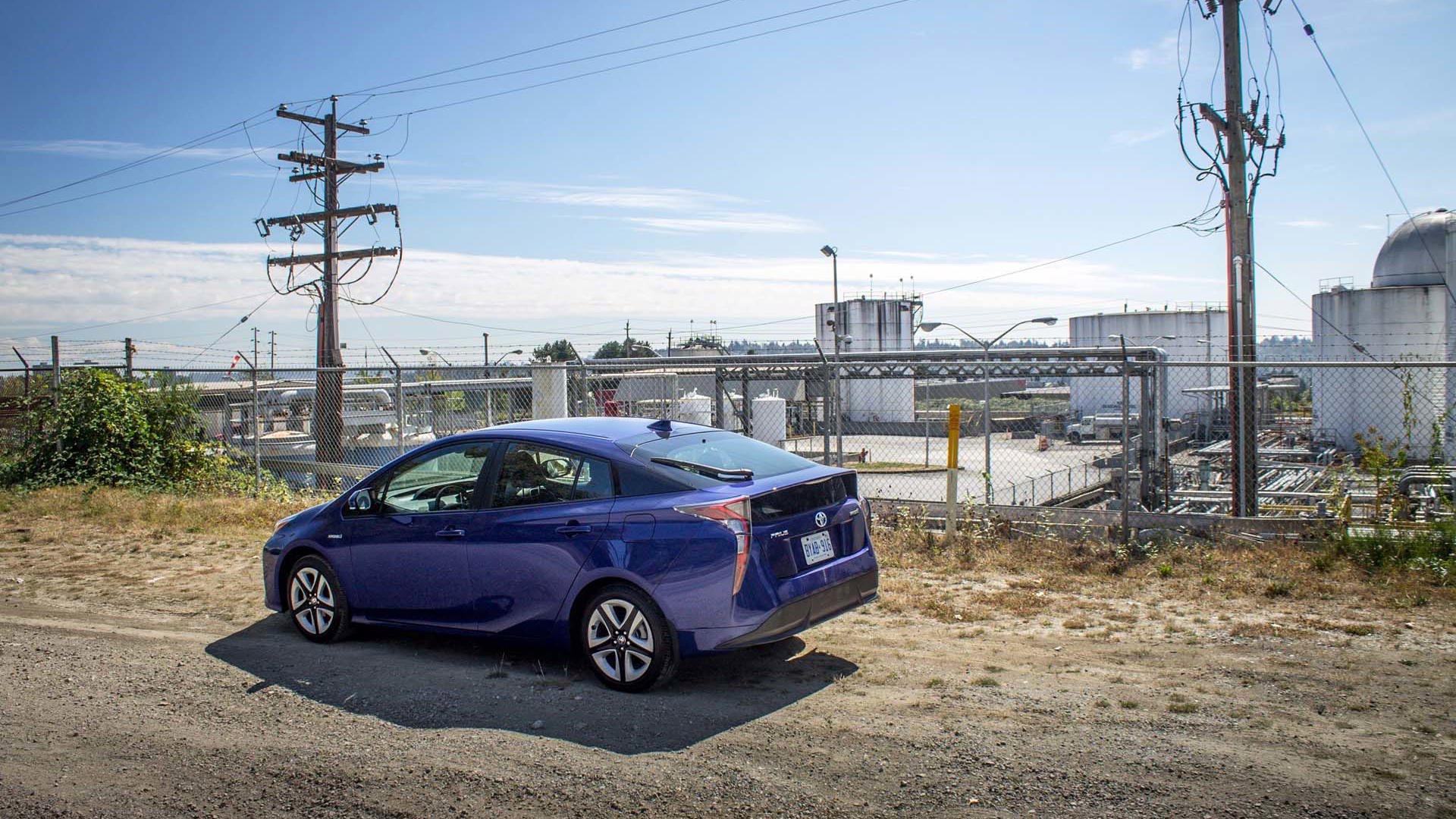
Which is too bad, because I really quite like the new Prius. Not the exterior styling, obviously. What the Fiat Multipla was Toyota thinking? It's just so weird – and weird just for the sake of being weird. Looks a bit like the alien from Lilo and Stitch. Maybe it'd be less jarring in silver or white.
But under the skin, the Prius is just relentlessly capable. The integration of both gasoline and electric power is so smooth as to be entirely seamless. Just flick that stubby little lever into Drive and glide off the line with good low-end torque and a surprisingly quiet experience. The hybrid system clicks and whirrs and hums like the engineering deck of the USS Enterprise, but this is hardly off-putting.
It's important to remember that Toyota's sold more than three million of these vehicles globally. If you call a cab, it's probably going to be a Prius. They just work, and while there's a lot of loud wondering about what to do when the battery pack won't hold a charge any more, they mostly display the relentless reliability you expect from a Toyota badge. It just works.
Hop into the Century for a bit, and let's play spot the similarities. Umm. Well, it doesn't have leather upholstery either. Instead, you get wool because it doesn't squeak or sweat on hot Tokyo days.
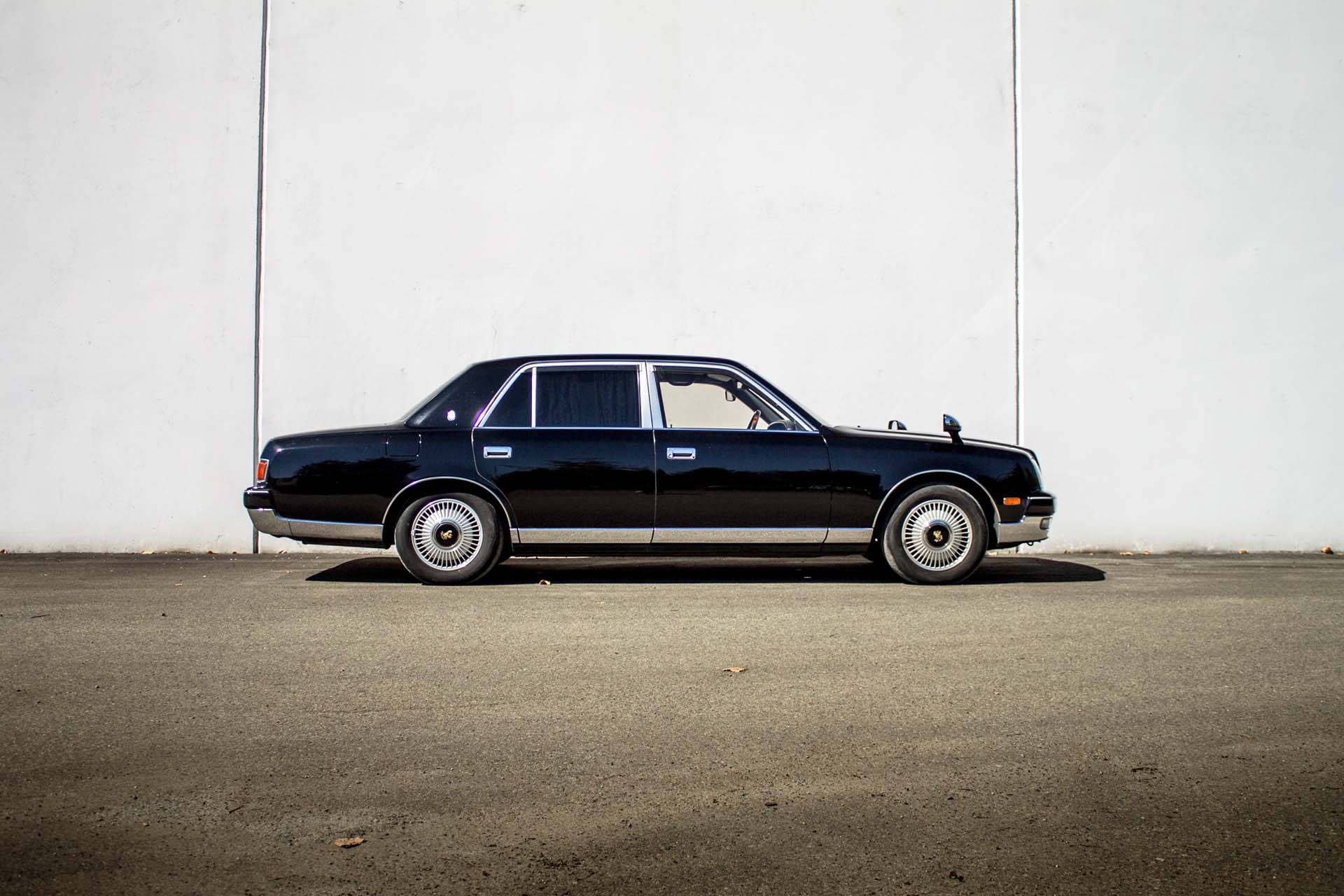
What it does have is an engine that's so incredibly smooth and quiet, you think it's not running. The 5.0L 1GZ-FE '12 is an absolute jewel; frankly, it makes a contemporary Rolls-Royce look like a Austin Allegro. From behind the wheel, it feels enormous and a little ponderous. This is a car for gliding through traffic like a whale shark surrounded by smaller fish. Really, I shouldn't even be driving it, as that's the chauffeur's job.
Hop directly into the Prius' driver seat and the improvements made to this year's chassis are immediately noticeable. The new architecture underpinning the car is significantly stiffer, and the centre of gravity is lowered a little over the previous model. There's also a new multi-link rear suspension for improved handling.
The interior is odd, but less off-putting than the new styling. The touchscreen display is easy to use, and while the centralized instrument panel could just as easily have been replaced by a more conventional layout, I can see why they didn't change it much from the previous generation. It's a Prius, and people expect it to be a little different. I have no idea, however, why they decided to put this clear-over-white plastic between the seats. It looks like an Apple iBidet.
Is it fun? Well, define fun. It's a Prius, not a Lotus Super 7. However, after leaving the luxurious-but-plodding Century behind, the Prius feels relatively lively. While the power output is actually down this year to a combined 121 hp from the 1.8L four-cylinder gasoline engine and AC electric motor, the electric torque output of 120 lb-ft from essentially zero rpm means it scoots pretty quickly up to urban traffic speeds. The brakes are still a bit numb, but the steering's perfectly acceptable.

However, just like the Century, the Prius encourages a relaxed driving style. I figure you could train elite chauffeurs by getting them to hit the maximum eco-score on the Prius, and then pop them into a suit and cap and stick them in the V12 limousine to ferry top executives around.
The Century impresses with presence and poise, the Prius impresses by achieving its stated fuel economy figures (4.4 / 4.6 L/100km, city/hwy) with apparent effortlessness. Both of these cars lie outside the mainstream of conventional sedans-and-crossovers, but they both show just what Toyota is capable of when it so chooses.
With the Century, they've created something that makes every other luxury car on Japanese roads look like it’s trying too hard. A rough translation of the marketing brochure reads, “The Century is acquired through persistent work, the kind that is done in a plain but formal suit.”
From business suit to t-shirt with a cartoon monster on it, we have the Prius. It is probably equally comfortable to the Century on smooth roads, futuristic but easy to use without referring to a manual, and very useful. The hatchback trunk is a practical 697 L, and with folding seats you can easily store a bicycle.
After dropping off the Century, the Prius hums its way back along the highway, shutting off its gasoline engine as we crest a slight rise and run downhill. Imagine if this car was only ever available in Japan, and came over only as a grey-market oddity like the left-hand-drive limousine we've just left behind. I bet we'd then recognize the Prius as something pretty unique.
Pricing: 2016 Toyota Prius
Base Price:$28,730
Options: $3,260 (Advanced Package [blind spot monitoring, rear cross-traffic assist, Softex seats, rain-sensing wipers, 8-way power driver's seat, parking assist])
Destination: $1690
A/C Tax: $100
Price as Tested: $33,807


